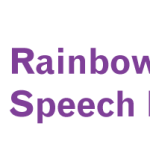WHAT IS INCONSISTENT PHONOLOGICAL DISORDER?
Why don’t people understand my child?
As a parent, it’s very easy to ‘speak your child’s language’. We know that when they say, ‘babu’ they could be talking about bubbles, or something that is purple, or even a baboon. We spend lots of time with our children, so we understand their speech quirks. However, other people may find it difficult to understand what our children say. Sometimes, this could be because they might not use the correct words, and have language difficulties, or perhaps they have a Speech Sound Disorder (SSD). Sometimes, children’s speech can be so variable, that they might use different speech patterns for the same word (where they could say cat but on another occasion, they might say tat, or tak, or cak). There are several types of SSD’s, which Samantha wrote about in a previous blog post, however today we are going to focus on what we can do when a child’s speech is inconsistent.
What is inconsistent phonological disorder?
Inconsistent phonological disorder is a breakdown of the phonological plan or templates (a helpful figure to visual speech processing can be seen below (Figure 1)). Children with inconsistent phonological disorder may be able to produce or copy individual speech sounds, but they do not use the correct speech sounds in the correct places when they talk. These children have a poor mental representation of the phonological plan for some words. This means that they do not have an accurate template stored so their sound production can change from time to time.
Goals and Approach
Children can be supported to improve their speech consistency through a Core Vocabulary approach. The goal of Core Vocabulary is to provide practice for certain functional words (meaningful words to the child) to increase a child’s consistency across all speech sounds. inconsistent phonological disorder is a difficulty with phonological planning and sequencing. The Core Vocabulary approach targets the underlying difficulty of assembling sounds into words, not just how children say individual sounds. Core Vocabulary is widely recognised as an evidence-based treatment approach for inconsistent phonological disorder (Crosbie, Holm & Dodd, 2005; Crosbie, Pine, Holm & Dodd, 2006; Dodd, Holm, Crosbie & McIntosh, 2006).

Process
- 70 target words are chosen that are relevant and useful for the child.
- Therapy typically lasts 30 minutes and takes place 2x a week.
- Therapy typically lasts for 8 weeks but can be continued longer.
- Therapy will take place with the Speech Language Pathologist and at home via parent’s or carers.
Once the child’s speech consistency has improved, they will usually require further therapy to resolve their remaining speech errors.
If you think that your child’s speech is difficult to understand, or inconsistent, book in with a Speech Pathologist for further assessment.
Written by Jonathon Cronk


